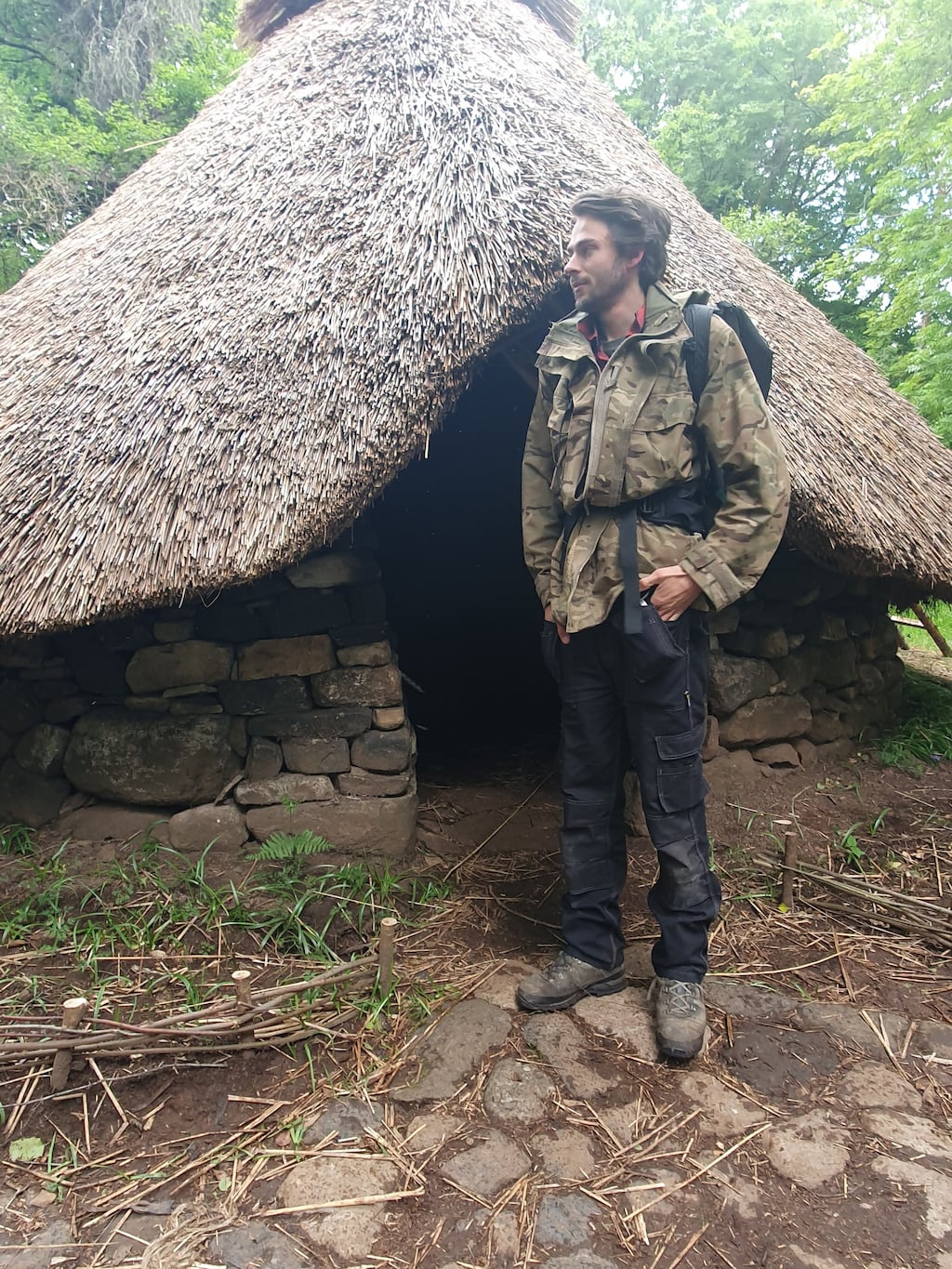When I met Julius Brummelman in the woods of Slieve Aughty, Co Galway, he grasped my hand with an iron grip. I knew then that he was a man who was used to hard work.
With his cousin Dylan van Leeuwen, Brummelman built a medieval roundhouse in a beautiful woodland setting in Co Galway during the Covid pandemic.
Surrounded by oak trees and bluebells and next to a bubbling stream, it looks exactly like the sort of place an ancient Irish family might have chosen to settle in.
Brummelman was born in the Netherlands but has lived in Ireland for many years, having followed his aunt and his cousins here. “I was three years old when my parents moved to a house within a woodland in Friesland in the north of the Netherlands,” he says.
Seán Moncrieff: Nature-loving types will tell you leaves are a gift. Don’t be fooled
‘It was utterly sacred’: Manchán Magan’s widow on his final days, death and legacy
Next spring these swans will be driven away by their formerly loving parents
Medicinal properties of nature not to be underestimated
“As a child, I was out in the woods every day. This gave me a strong connection with nature, and later combined with the environmental interests that my parents gave me.”
Brummelman has been interested in bushcraft since he was a child. He has taken on a range of challenges, living in the woodlands with only basic tools such as a knife and an axe.

I watch him lighting a campfire with just a flint to ignite the kindling that he has collected in the woods. He has also become a self-taught film-maker and his YouTube channel, Smooth Gefixt, has an international audience.
“Over the years I have tried to teach myself a variety of woodworking skills,” he says.
“Wood is such a beautiful and easy material to work with. Trees are so useful for everything from making fires to building houses. I am not against cutting trees at all but we should try to do it in a sustainable, balanced way.”
In his practical approach to life, Brummelman says he is “always happy” to use firewood to heat his house. If demand was higher for timber, he believes that could be a driver for creating more forest cover.
With his family, Brummelman has recently bought an area of woodland near Lough Rainey, Co Clare. This is a conventional conifer plantation, but it is beside an ancient woodland with mostly native tree species.
“I saw this as an ideal place to start a conversion from a monoculture plantation to a more mixed woodland,” he says.
He will do this conversion in gradual stages, first thinning out the spruce trees and planting native trees in their place.
“The existing conifers will provide cover for the native trees to mature and eventually replace them. With this type of continuous cover forestry, both economic and biodiversity values of the forest grow hand in hand.”
Brummelman’s late father was a vet and he grew up visiting many farms with him.
“In Ireland I have been talking to many farmers about woodland,” he says. “I want to encourage farmers to incorporate trees into their farming enterprises.
“Because we don’t really have a forest culture any more, most farmers don’t think of trees as a useful part of their farming. However, with continuous-cover forestry, the focus can be on individual trees.
“Farmers could go into a forest, manage it carefully and add value to individual trees. In that way they would connect more to their woodland. It feels very satisfying to walk through your own forest which is maturing around you.”
[ Most farmers could earn more money by planting trees - why don’t they?Opens in new window ]
At the Slieve Aughty Centre, he has been planting an agroforestry plot with a variety of native and non-native trees such as sweet chestnut.
He has a few favourite tree species. He planted a lime tree in memory of his father, who clearly had a big influence on his son’s life.
“I like eating lime leaves as a salad,” he says. “For forest development in Ireland, I think oak is the most interesting as it can grow rapidly in good soils with very specific management.
Although he is passionate about trees, he is also a practical person who knows the benefits that trees and woodland offer.
He is very familiar with a variety of European woodlands as he studied Forest and Nature Conservation at Wageningen University in the Netherlands.
Now Brummelman has qualified as a registered forester and is training in the methods of continuous-cover forestry. Learning new skills and methods keeps him fresh and inspires him to achieve more in reforesting Ireland.
Richard Nairn is an ecologist and author













